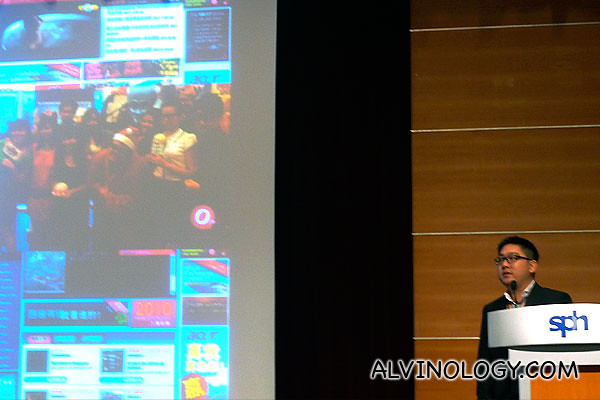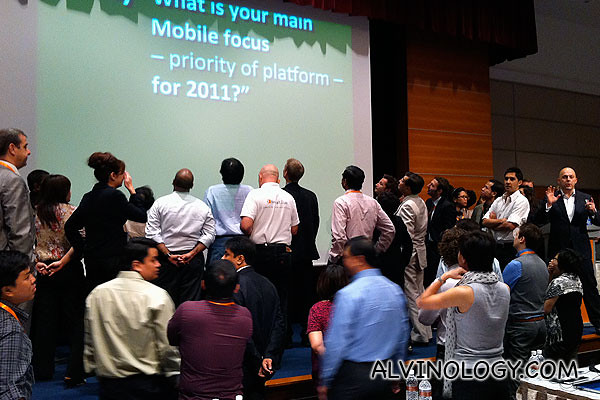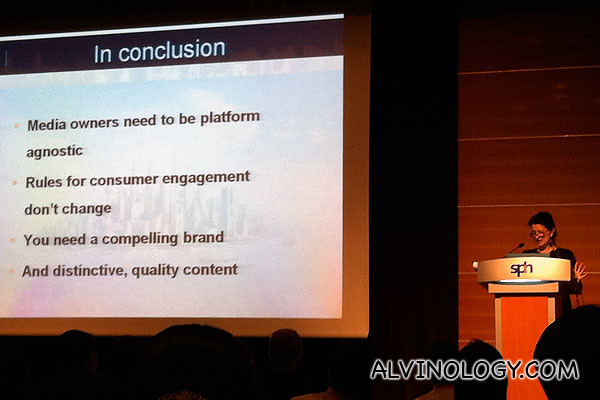Pardon me if this blog post comes across as dry. I seldom delve much into my line of work in online marketing in the newspapers industry. This will be one of the rare post to provide a glimpse into the less fun and invisible part of my work to the public eyes; beyond the various snazzy public events, marketing campaigns and blog outings.
Last week, I attended the second Digital Media Asia Conference, organised by the World Association of Newspapers and News Publishers (WAN-IFRA).
The conference was spread over three days and attended by many media bigwigs from around the world, particularly from the newspapers industry. To name a few, there were delegates from The Nation Publishing Group, Thailand; Yomiuri Shimbun, Japan; Wall Street Journal Digital Network, Hong Kong; Dow Jones, Australia; Southern Weekly, China; Philippine Daily Inquirer; Readers’ Digest Asia; and the Associated Press among many others.
The first day was focused on online media, with regards to strategies for monetising online content, leveraging on social media and innovative ventures in digital media. The second day was on mobile media with focus on redefining the mobile media landscape, learning from different global markets and mobile initiatives for increasing reach/revenues. The last day covered on the impact of tablets and e-reading on the media landscape, leveraging on experiences from early adopters as well as success factors for launching e-reader/tablet channel.
I was one of the invited speaker who spoke on Online Community Monetisation (omy.sg) on the first day of the conference. When I saw the list of over 200 delegates from around the world, all high level executives in the newspaper industry, I got a little nervous. However, as the topic I was speaking on was on online media marketing which I consider myself to be somewhat of an expert on, I felt more confidence. The presentation went smoothly and a few delegates approached during the breaks to find out more, which was really encouraging.

I won’t cover what I went through in my presentation. Instead, below are some interesting pointers which I noted down throughout the three days, coming from various speakers. I hope they are of insight to you too:
Joe Nguyen, Vice President Asia-Pacific, Comscore, Singapore:
1. The Internet makes up 60% of Singaporeans’ media consumption, however, only a paltry 6% of ad spent is allocated to online by advertisers.
2. Brand advertising makes up 63% of ad spent in traditional media with 37% devoted to direct response advertising. In the online media, brand advertising makes up just 23% while direct response advertising accounts for 77%. Brand advertising is where the money is, but online media can barely smell it.
3. Click-through-rate is not the best measure of an online marketing campaign’s effectiveness, often understating campaign ROIs. “Clickers” are a dying breed, consisting of mostly lower income, younger audience who are not usually the target audience for marketers.
4. Brand recall surveys show that users exposed to an ad campaign will display a higher tendency to search for the advertised brand over the next few weeks versus someone not exposed to the ad. In addition, the longer the period of ad exposure, the better the brand recall.
Yuchiro Watanabe, Production Manager, Digital Planning & Strategy Bureau, Nikkei, Japan:
5. Charging for online content – the money seems to lie primarily in financial news services as of now – eg. Financial Times; Nikkei, Japan.
6. Bundling strategy for added sales works for Nikkei – selling the online edition together with the print edition at a discount.
7. Nikkei practises consumer differentiation by breaking down users in various groups like subscribers, registered and non-registered users, each with different level of content access.

Stig Nordqvist, Executive Director Emerging Digital Platforms, WAN-IFRA, Germany:
8. For mobile apps, consider doing the smallest amount of functionality and do it well instead of spending all your time developing a mega app which has many functions that users may not even want/need.
9. Make gorgeous app icons.
10. Embed statistical collection tools within the apps.
Grig Davidovitz, Consultant and Project Leader, GD Consulting, Israel:
11. Kindle is not about Kindle, but about the experience of reading books.
12. Choice, Continuity and Consistency are important for newspapers’ content strategy across different platforms.
13. Chronological presentation of news (like blogs) may work better than the conventional inverted pyramid, hierarchical presentation for digital content.

Angela Mackay, Executive Director, Head of Asia Pacific, Financial Times, Hong Kong:
14. News content should work towards becoming platform agnostic in the future. The same content can be delivered via different media to the same user in different social setting.
15. Distinctive, quality content is what users are looking for and willing to pay subscription fees for.
Technorati Tags: digital media asia conference, wan-ifra, world association of newspapers and news publishers, wan-ifra digital media asia, digital media asia 2010, omy.sg, alvinology, alvin lim sph, alvin lim omy.sg, joe nguyen comscore, yuchiro watanabe nikkei, stig nordqvist wan-ifra, grig davidovitz gd consulting, angela mackay financial times, online media asia 2010, mobile asia 2010, tablets and e-reading asia













